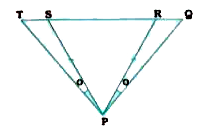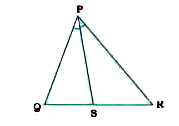In the given figure, PS=PR,∠TPS=∠QPR. Prove that PT=PQ.
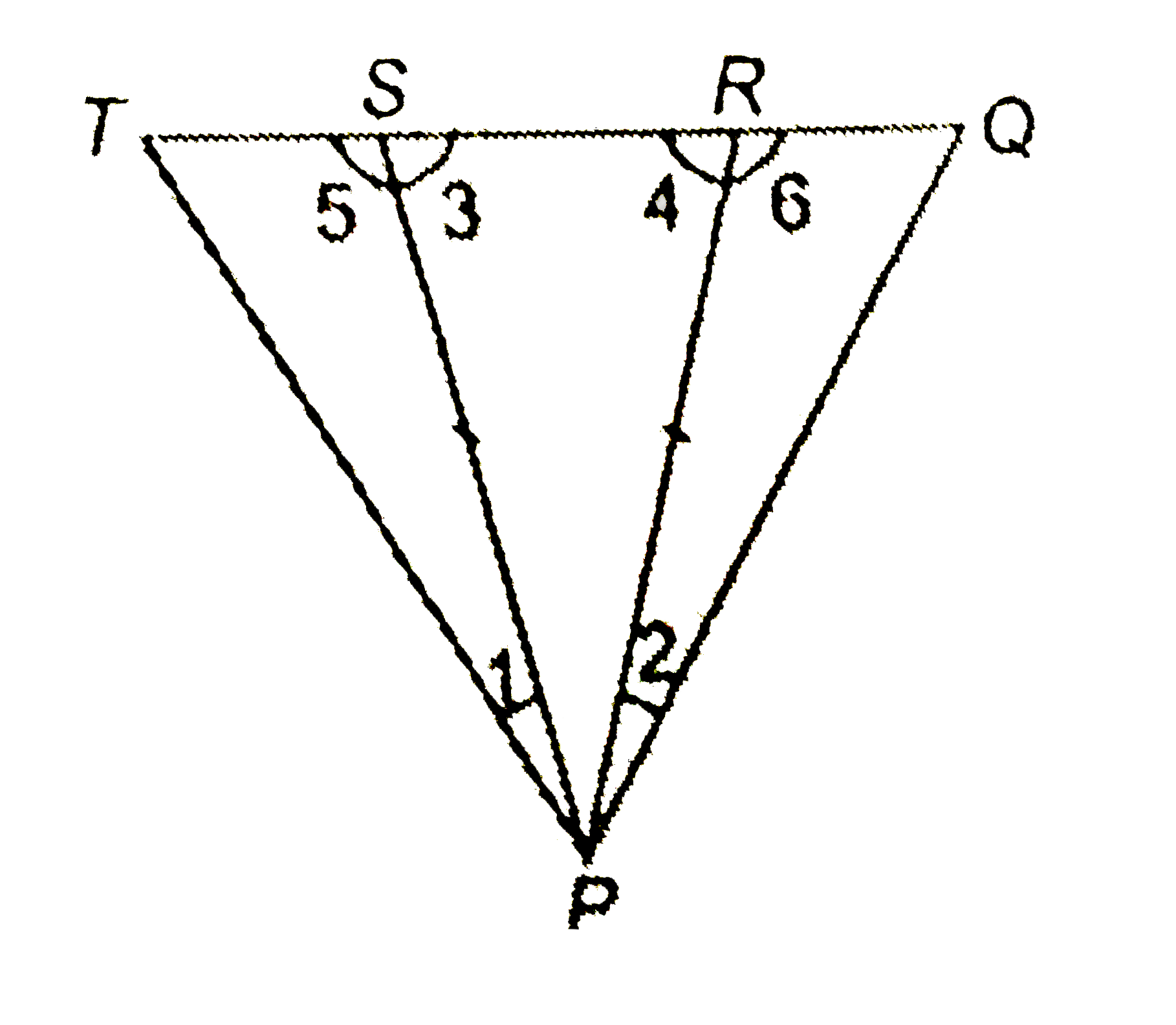
Video Solution
Text Solution
Since PS=PR (given)
∴∠4=∠3 (angle opposite to equal sides are equal)
⇒ 180−∠6=180−∠5 (L.P.A.)
⇒ ∠6=∠5
Now, in ΔPST and ΔPRQ,
∵⎧⎪⎨⎪⎩∠5=∠6(just proved)PS=PR(given)∠1=∠2(given)
∴ΔPST≅ΔPRQ (ASA)
∴PT=PQ (c.p.c.t) Hence Proved.
|
Updated on:21/07/2023
Topper's Solved these Questions
- BOOK - NAGEEN PRAKASHANCHAPTER - TRIANGLESEXERCISE - Problems From NCERT/exemplar5videos
TRIANGLES
- BOOK - NAGEEN PRAKASHANCHAPTER - TRIANGLESEXERCISE - Exercise 7a35videos
TRIANGLES
- BOOK - NAGEEN PRAKASHANCHAPTER - SURFACE AREA AND VOLUMEEXERCISE - Revision Exercise (long Answer Questions)10videos
SURFACE AREA AND VOLUME
Similar Questions
Knowledge Check
- Question 1 - Select One
In given figure, PS = QR and ∠SPQ=∠RQP. If QS=8 m then PR=
 A8 mB4 mC16 mDNone of these
A8 mB4 mC16 mDNone of these
In Figure, PS=PR, ∠TPS= ∠QPR. Prove that PT=PQ
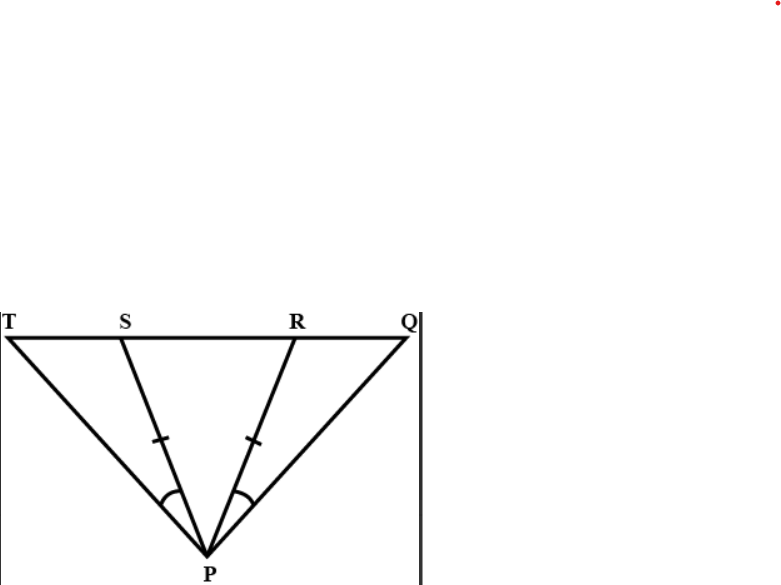 View Solution
View SolutionIn the given figure PSSQ=PTTRand∠PST=∠PRQ. Prove that PQR is an isoscles triangle.
 View Solution
View SolutionIn the given figure, PQ||ABandPR||AC.
Prove that QR∣∣BC
 View Solution
View SolutionIn the given figure, we have PQ = SR and Pr = SQ. Prove that:

∠PQR=∠SRQView SolutionIn the given figure, we have PQ = SR and Pr = SQ. Prove that:

ΔPQR≅ΔSRQView SolutionIn the given figure, if PQR is an isosceles triangle such that PQ = PR and PS = PT, then the value of y is equal to
View SolutionIn the given figure, PQ = PS = SR and ∠QPS=40∘. Then what is the value of ∠QPR (in degrees)?
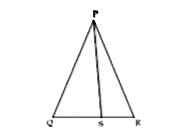 View Solution
View Solution


